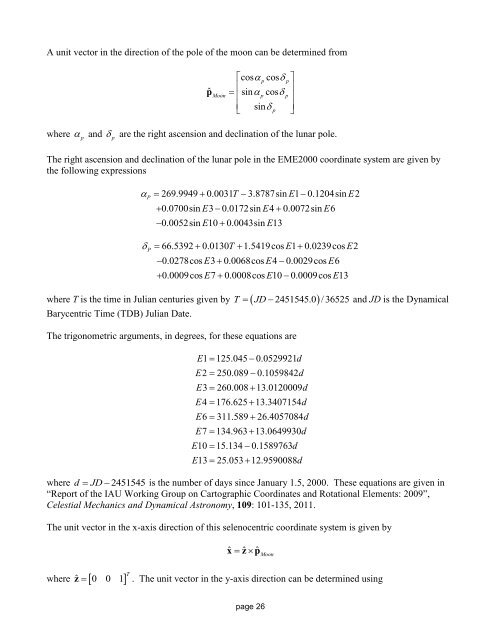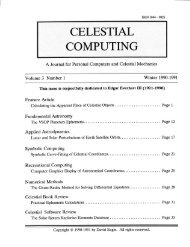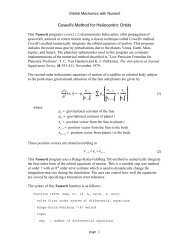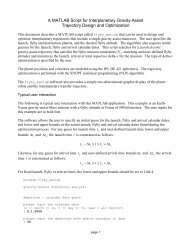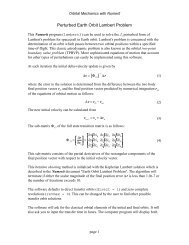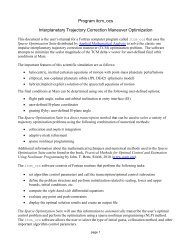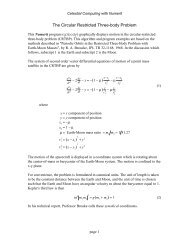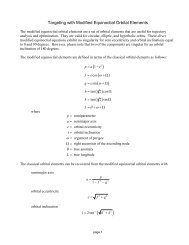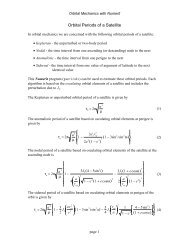PDF document - Orbital and Celestial Mechanics Website
PDF document - Orbital and Celestial Mechanics Website
PDF document - Orbital and Celestial Mechanics Website
You also want an ePaper? Increase the reach of your titles
YUMPU automatically turns print PDFs into web optimized ePapers that Google loves.
A unit vector in the direction of the pole of the moon can be determined fromcospcospp ˆMoon sinp cosp sinp where p<strong>and</strong> pare the right ascension <strong>and</strong> declination of the lunar pole.The right ascension <strong>and</strong> declination of the lunar pole in the EME2000 coordinate system are given bythe following expressionsP 269.9949 0.0031T 3.8787sin E10.1204sin E20.0700sin E3 0.0172sin E4 0.0072sin E60.0052sin E10 0.0043sin E13P 66.5392 0.0130T 1.5419cos E10.0239cos E20.0278cos E3 0.0068cos E4 0.0029cos E60.0009cos E7 0.0008cos E10 0.0009cos E13where T is the time in Julian centuries given by T JDBarycentric Time (TDB) Julian Date.The trigonometric arguments, in degrees, for these equations are 2451545.0 / 36525 <strong>and</strong> JD is the DynamicalE1 125.045 0.0529921dE2 250.089 0.1059842dE3 260.008 13.0120009dE4 176.625 13.3407154dE6 311.589 26.4057084dE7 134.963 13.0649930dE10 15.134 0.1589763dE13 25.053 12.9590088dwhere d JD 2451545 is the number of days since January 1.5, 2000. These equations are given in“Report of the IAU Working Group on Cartographic Coordinates <strong>and</strong> Rotational Elements: 2009”,<strong>Celestial</strong> <strong>Mechanics</strong> <strong>and</strong> Dynamical Astronomy, 109: 101-135, 2011.The unit vector in the x-axis direction of this selenocentric coordinate system is given bywhere z xˆ zˆpˆMoonˆ 0 0 1 T. The unit vector in the y-axis direction can be determined usingpage 26


